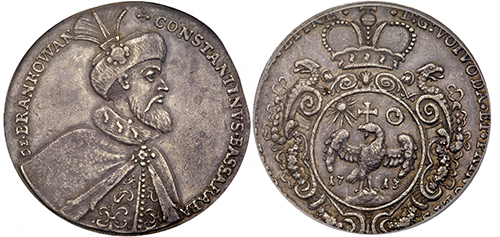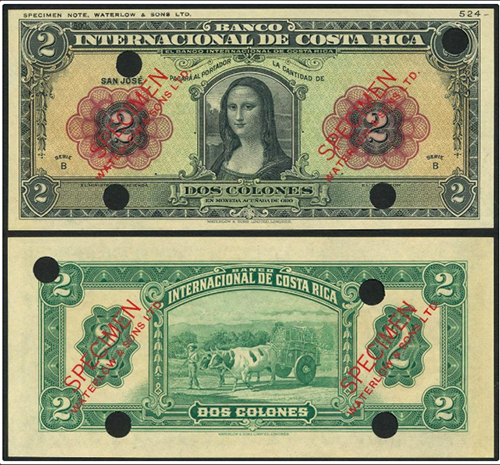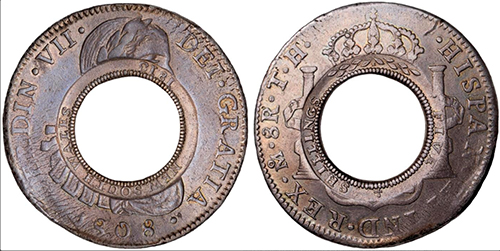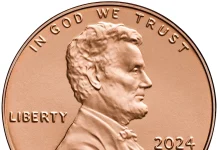
By Antoinette Rahn
The 47th annual New York International Numismatic Convention (NYINC) is underway now. It’s one of the kick-off events of the numismatic community calendar, and with good reason. The focus of the show is foreign and ancient numismatic examples, wherein displays of U.S. coins minted after 1815 are not permitted in the bourse area.
In addition to the bourse floor, which is open from Thursday-Sunday, Jan. 10-13, NYINC showcases auctions every day of the full show schedule, beginning Jan. 4 through Jan. 13. In all, nine auction houses are bringing lots to the auction block during NYINC. In some instances, the auction houses host their own auctions, while other sales will feature lots presented by multiple auction houses. According to the NYINC site, this year’s participating auction houses include Baldwin’s of St. James’s; Heritage Auctions; Spink; Classical Numismatic Group; The New York Sale — which is a joint venture of Ira and Larry Goldberg, M&M Numismatics, Sovereign Rarities and Dmitry Markov, and an auction presentation by Stack’s Bowers.
That’s a significant number of lots on offer during a single event, and as such it is the perfect place to select 4 Movers & Shakers in Numismatics for the first part of this week.
Enjoying the Exploration of Coins
As is often the case, the selection of the featured coins and notes is based on a few different criteria – the amount of attention (views) the lot is generating, unique qualities in design, the history it represents, and/or provenance, and rarity. Selecting just four from the multitude of lots being presented at NYINC was not a simple chore. It’s also a bit like being a kid in a candy store, with many wonderful treasures and treats to behold.
Silver Medallic Taler/Tallér, 1713
To be presented for auction Jan. 8, 2019 by The New York Sale (group auction venture)
Estimate: $20,000
Talers/Tallers were among the earliest silver coins to be produced in the area that is now Austria and Italy, during the late 15th century. This example bears the cuirassed bust (armored piece covering the torso) of Prince Constantin II Brâncoveanu.
I’m often drawn to the intricate design of coins, notes, and medals, especially those examples that date back centuries. The exquisite details on this taler, from the Prince’s ornate fur hat depicted on the obverse to the fierce appearance of dragons (I’m assuming they are dragons) on the reverse, the details are marvelous. In addition, the brief catalog description also piqued my interest regarding the demise of Prince Constantin II. His reign as Prince of the Romanian Land was relatively short, just a quarter century, due to his arrest, torture, and beheading.
Saints & Cents
As reported on the website of the Orthodox Church in America, one year after the mintage of this silver taler, Constantine II, his sons, sons-in-law, and a good friend was arrested by Ottomans. The OCA website reports that Prince Constantine and his group were told they needed to convert to Islam and pay a significant amount of money in order to escape death. Other sources report that the men were held captive and tortured only in order to extort money from them. In the end, the prisoners held their position, and they were beheaded. The Roman Orthodox Church sanctified Constantin and his sons, and in 2018 the saints were added to the Russian Orthodox calendar, according to the auction catalog.
Another intriguing story to enjoy after being inspired by a chance encounter with a coin.
View more lots in The New York Group offering>>>
Ducat of Albrecht V, Bavaria, Germany, 16th Century
To be presented for auction Jan. 11, 2019 by Stack’s Bowers
Estimate: $25,000-$35,000
This seldom-seen ducat represents one of the earliest portrait coins minted in Bavaria, according to the auction catalog. It seems fitting that the Elector of the Empire Albrecht V, Duke of Bavaria graces the obverse of the coin. I think it’s interesting the depth of detail that went into the design of the Duke’s crown, beard and hair. When looking at photos of the Duke it’s a nice likeness, especially for a coin minted in the 16th century.
Legacy Lives On
In my research of Duke Albrecht V’s contribution while serving the throne I learned that he was passionate about the arts and that he and his wife (Duchess Anna) were collectors. Of, among other things, coins. Fascinating. In fact, according to an article posted at Revolvy.com, the Duke was one who purchased entire collections, including that of a noted Venice collector, which contained 2,480 medals and coins. His collections were so significant that in 1568 he commissioned the construction of an Antiquarium within his residence to house the items. The Antiquarium remains and is the oldest room in the Munich Residence, according to the Residence’s website.
Visit Stack’s Bowers auction catalog to explore more lots>>>
2 Colones specimen, El Banco Internacional de Costa Rica, 1931
To be presented for auction Jan. 11, 2019 by Spink & Son, Ltd.
Estimate: $2,500-$3,000
I’m sure it’s not a question we’ll see in Trivia Pursuit, but it might be fun to see a question like ‘What do Mona Lisa, Costa Rica, and farmers have in common?’ Why, banknotes, of course.
This specimen is also a trial color, which means it represents a banknote that has been printed in a variety of color or shades, as part of a testing process.
Origin of World-Famous Profile on A Coin
In all honesty, I spent quite a bit of time researching why Mona Lisa appears on this note issued by El Banco Internacional de Costa Rica, but I never really found the answer. So, with that, if anyone reading this has the answer to that question, I’d love to hear from you (arahn@beckett.com). Regardless, it’s quite interesting to me to see one of the most recognized faces in fine art appear on a banknote. It certainly supports the concept that coins and notes are miniature examples of art.
Visit Spink & Son, Ltd. to view more lots in the NYINC auction>>>
5 Shilling (Holey Dollar), 1813, On a Mexico City Portrait 8 Reales, 1808
To be presented for auction Jan. 13, 2019 by Baldwin’s of St. James
Estimate: $190,000-$220,000
It’s fascinating to me, the amount of substance represented by a space where ‘nothing’ actually exists. Such is the case of the Australian Holey Dollar.
I’ll admit, my initial selection of this coin was largely due to the fact that it contains a hole. However, thanks to the fantastically detailed description in the auction catalog presented by Baldwin’s of St. James, I realize there is a lot more to the story.
This specimen is a five-shilling piece also known as a holey dollar. The dollar, counterstamped in 1813 is struck on a Mexico City portrait 8 reales of Ferdinand VII, with the date 1808. The 8 reales is considered the host coin, and the 5 shilling is the counterstamped piece.
History of the Holey Dollar
As history reveals, New South Wales started as a penal colony and settlement under British reign. The area’s first governor realized quickly after his arrival in 1810 that one of the things missing in this civilization was some type of currency system. A solution presented itself in 1812 with the arrival of a ship carrying 40,000 silver 8-reales pieces, which the British government purchased for the colony from the East India Company. The availability of the Spanish 8-reales pieces wasn’t unusual, as other colonial settlements were known to receive them as well, but they would often find their way in locales outside the designated settlement. The governor had a solution, alter the coins and in turn create a local form of currency.
As the story goes, the leaders tapped the local resources and found just the person for the job, William Henshall, a convict who landed in New South Wales for forgery. Henshall utilized his ‘skills’ to punch the center of each 8-reales and then apply a counterstamp with the place, date, and value. In addition, it resulted in the creation of two coins from a single host coin. The 5-shilling unit (the Holey Dollar) was used for larger transactions, while the piece of the coin that was punched from the host became what was known as a dump. It was the small coinage of the colony, and the colony made a profit.
Today, it’s believed only 300-350 of the ‘Holey Dollars’ still exists, while 1,500 or so dumps remain. It’ll be interesting to see what this uncommon and unique coin commands at auction.
Visit Baldwin’s of St. James to explore more lots in the NYINC auction>>>


















